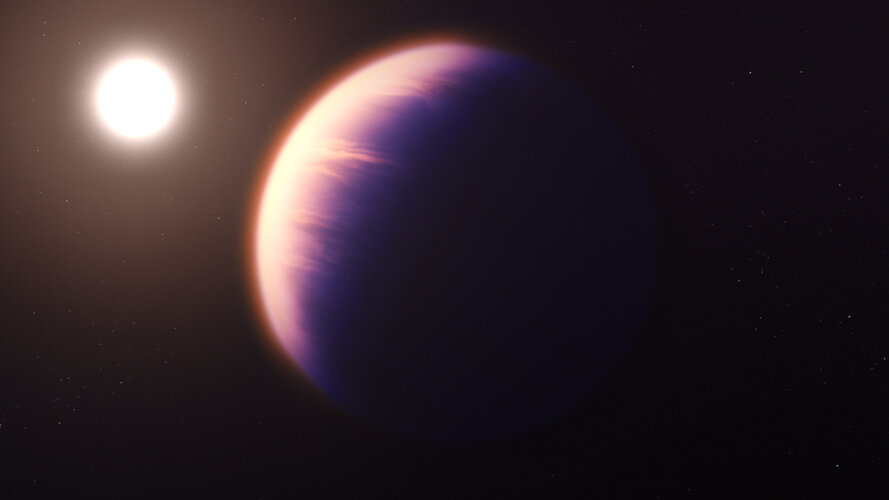
“Planets are sculpted and transformed by orbiting within the radiation bath of the host star,” Batalha said. “On Earth, those transformations allow life to thrive.”
The planet’s proximity to its host star – eight times closer than Mercury is to our Sun – also makes it a laboratory for studying the effects of radiation from host stars on exoplanets. Better knowledge of the star-planet connection should bring a deeper understanding of how these processes affect the diversity of planets observed in the galaxy.
Other atmospheric constituents detected by the Webb telescope include sodium (Na), potassium (K), and water vapour (H2O), confirming previous space- and ground-based telescope observations as well as finding additional fingerprints of water, at these longer wavelengths, that haven’t been seen before.
Webb also saw carbon dioxide (CO2) at higher resolution, providing twice as much data as reported from its previous observations. Meanwhile, carbon monoxide (CO) was detected, but obvious signatures of both methane (CH4) and hydrogen sulphide (H2S) were absent from the Webb data. If present, these molecules occur at very low levels.
To capture this broad spectrum of WASP-39 b’s atmosphere, an international team numbering in the hundreds independently analysed data from four of the Webb telescope’s finely calibrated instrument modes.



